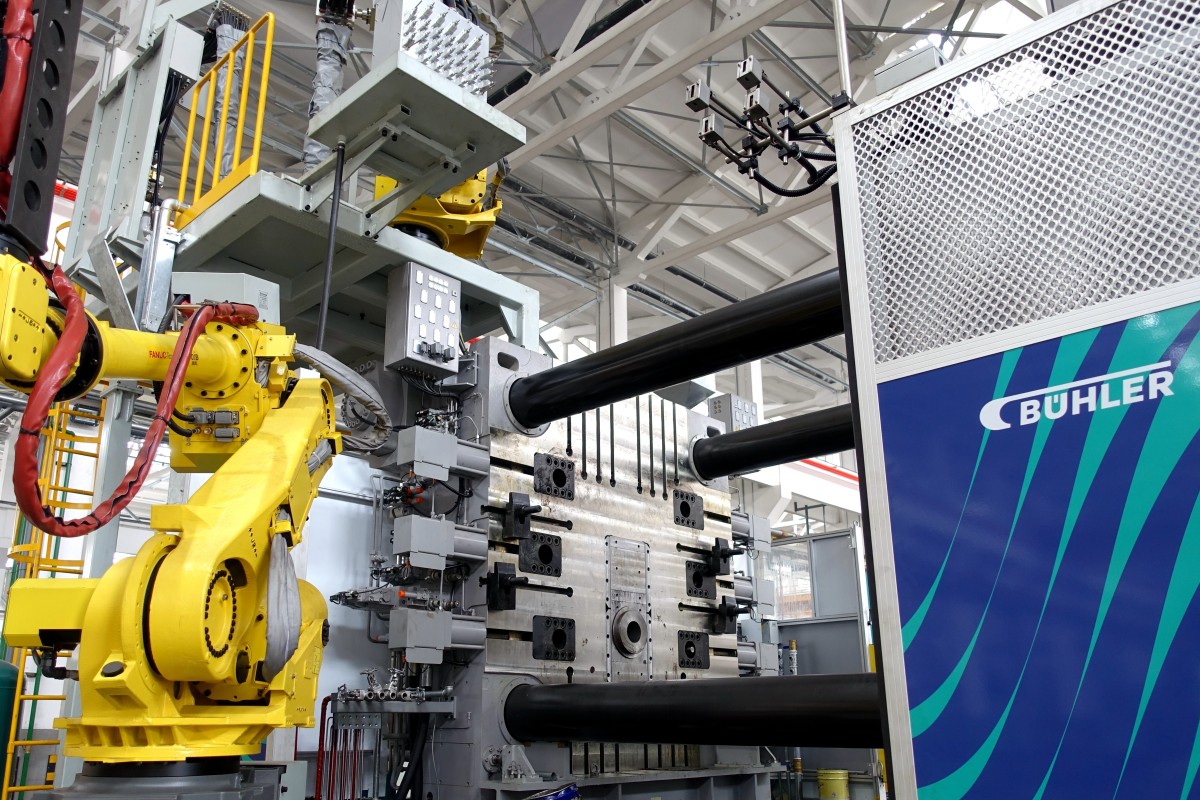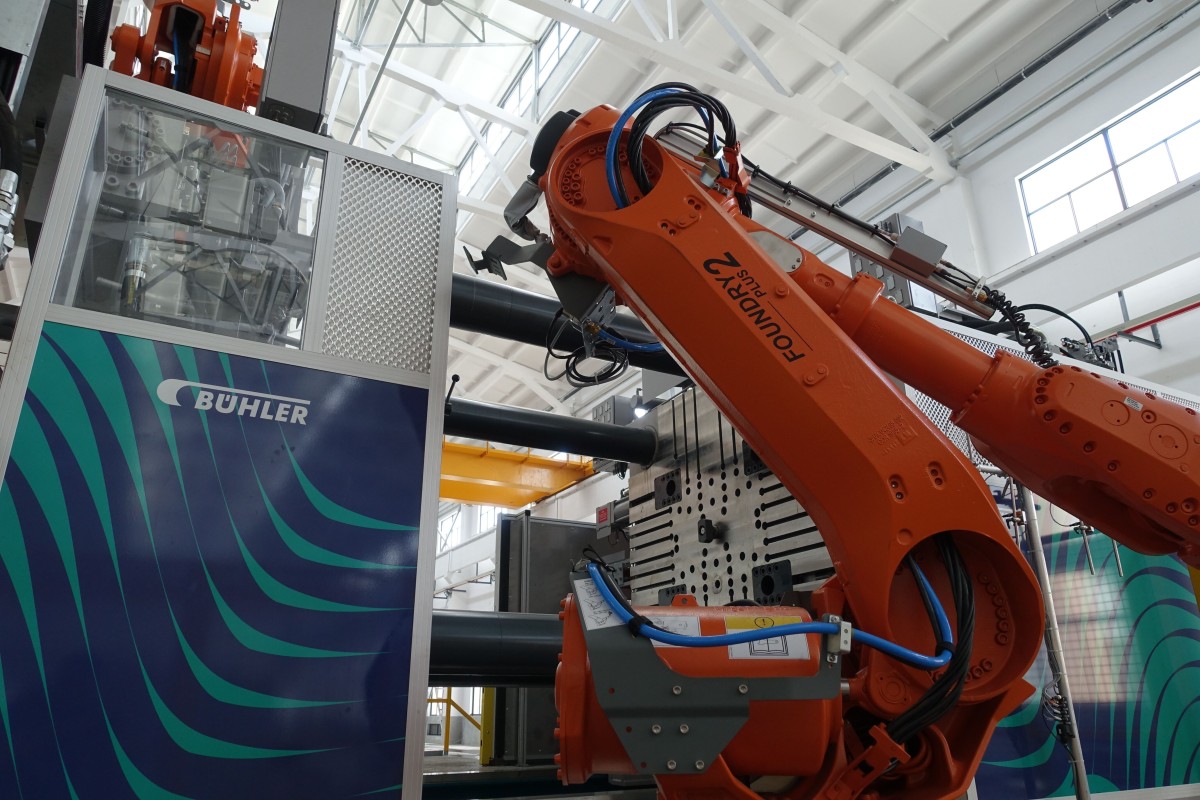In the manufacturing world, there are various methods for shaping aluminum alloys into finished components. One highly effective method is cold chamber die casting, ideal for materials with a high melting point, such as aluminum. This process uses high pressure to inject molten aluminum or its alloys into a mold.
The Components of a Cold Chamber Die Casting Plant
The cold chamber die casting machine consists of several essential components that work together to produce precise and efficient aluminum or alloy parts:
- Injection system: a hydraulic or mechanical plunger that injects molten aluminum or alloy into the mold.
- Injection chamber (shot sleeve): ensures controlled injection, minimizing metal contact with the system.
- Mold assembly: two halves (core and cavity) shaping the molten aluminum.
- Clamping mechanism: keeps the mold tightly closed during injection.
- Ejection system: ejector pins remove the solidified casting safely.
- Cooling channels: regulate mold temperature for proper solidification.
- Hydraulic system: powers both injection and clamping mechanisms.
The Cold Chamber Die Casting Process
The process begins with selecting the appropriate aluminum or other alloys. These materials are melted in an external furnace, then poured into the shot sleeve of the cold chamber machine. The configuration allows greater control of high-melting-point materials, increasing process consistency.
A hydraulic plunger forces the molten aluminum into the mold cavity under high pressure, ensuring precise filling and minimal air entrapment. Once filled, the aluminum cools and solidifies rapidly before ejection.
Clamping Force and Cycle Time
Clamping Force
Clamping force holds the two halves of the mold together during injection and is calculated as:
Clamping Force = Pressure in the cavity × Projected area
Example: if the projected area is 120 cm² and injection pressure is 800 kg/cm²:
Clamping Force = 800 × 120 = 96,000 kg ≈ 96 tons

Cycle Time
The cycle time is the total time from one injection cycle to the next. It includes clamping, injection, cooling, and ejection, typically ranging from 2 seconds to 1 minute depending on complexity.
Advantages of Cold Chamber Die Casting
- Processes high-melting-point materials like aluminum and copper alloys using an external furnace.
- Provides superior temperature control and prevents premature solidification.
- Produces complex, high-precision shapes with excellent finishes.
- Extends mold life due to reduced thermal stress.
- Enhances quality through monitoring of temperature, pressure, and injection speed.
- Offers flexibility for large or heavy components in automotive and aerospace sectors.
Comparison with Hot Chamber Die Casting
Unlike the cold chamber method, the hot chamber process keeps the chamber in contact with molten metal, ideal for low-melting-point alloys.
| Aspect | Hot Chamber | Cold Chamber |
|---|---|---|
| Furnace position | Integrated | Separate external furnace |
| Cycle time | Shorter (~15 shots/min) | Longer due to transfer step |
| Material compatibility | Low-melting-point alloys | High-melting-point alloys |
| Injection pressure | Lower | Higher |
| Tool life | Longer | Shorter |
| Production volume | High | Medium to large parts |
| Part complexity | Simple | Complex |
| Surface finish | Excellent | Good |
| Safety | Lower risk | Requires strict precautions |
| Installation cost | Lower | Higher |
Suitable Materials
- Aluminum: lightweight, high strength.
- Magnesium alloys: even lighter, ideal for weight-sensitive parts.
- Copper: excellent electrical conductivity.
Applications
- Automotive: engine blocks, transmission housings.
- Aerospace: engine components, landing gear parts.
Working with Edr Fittings Srl
Edr Fittings Srl designs durable, low-maintenance molds for high-quality die casting. Using advanced CAD, CAM, and CAE tools, they ensure precision and reliability throughout production.
If you require high-quality die-cast components in aluminum or other alloys, contact Edr Fittings Srl today.


